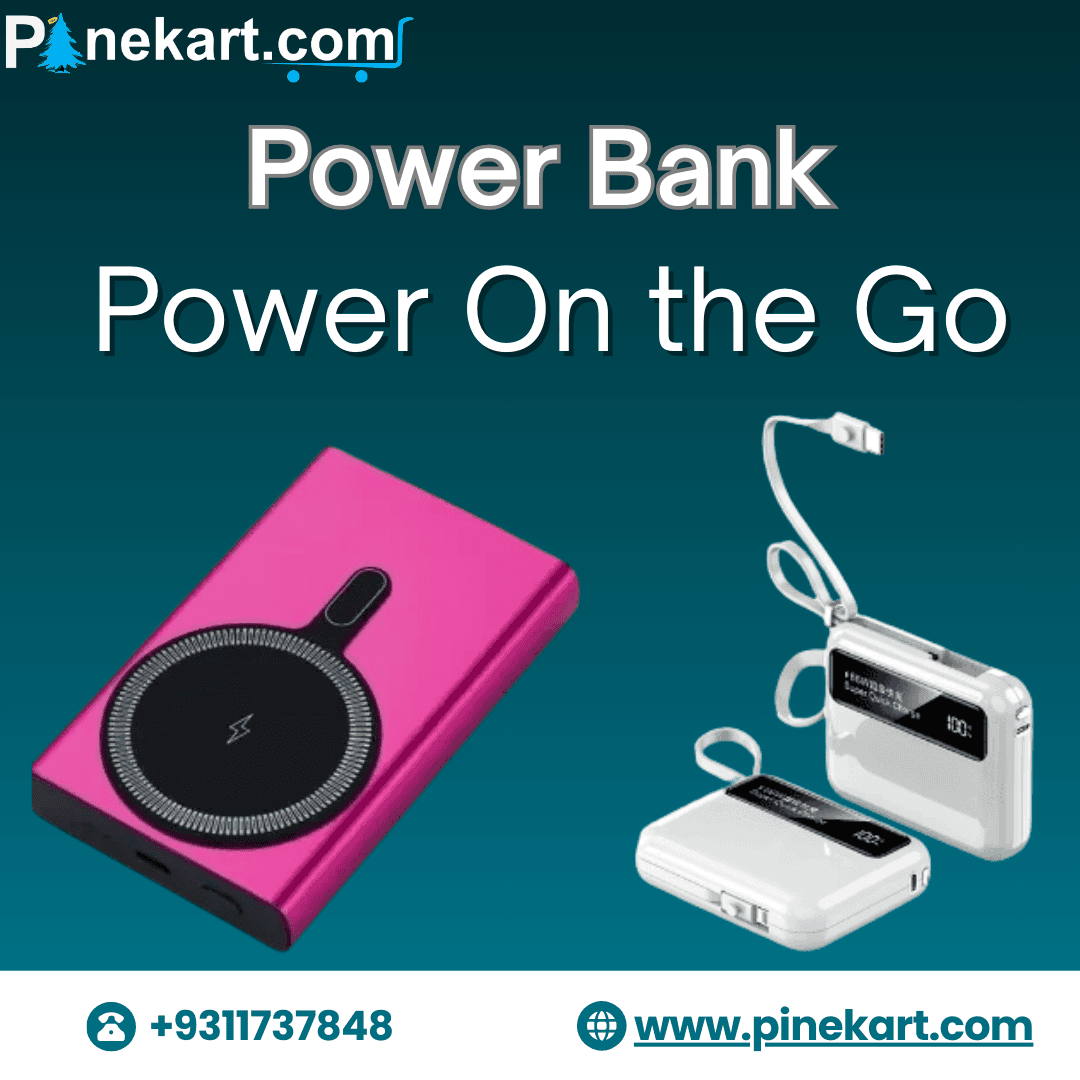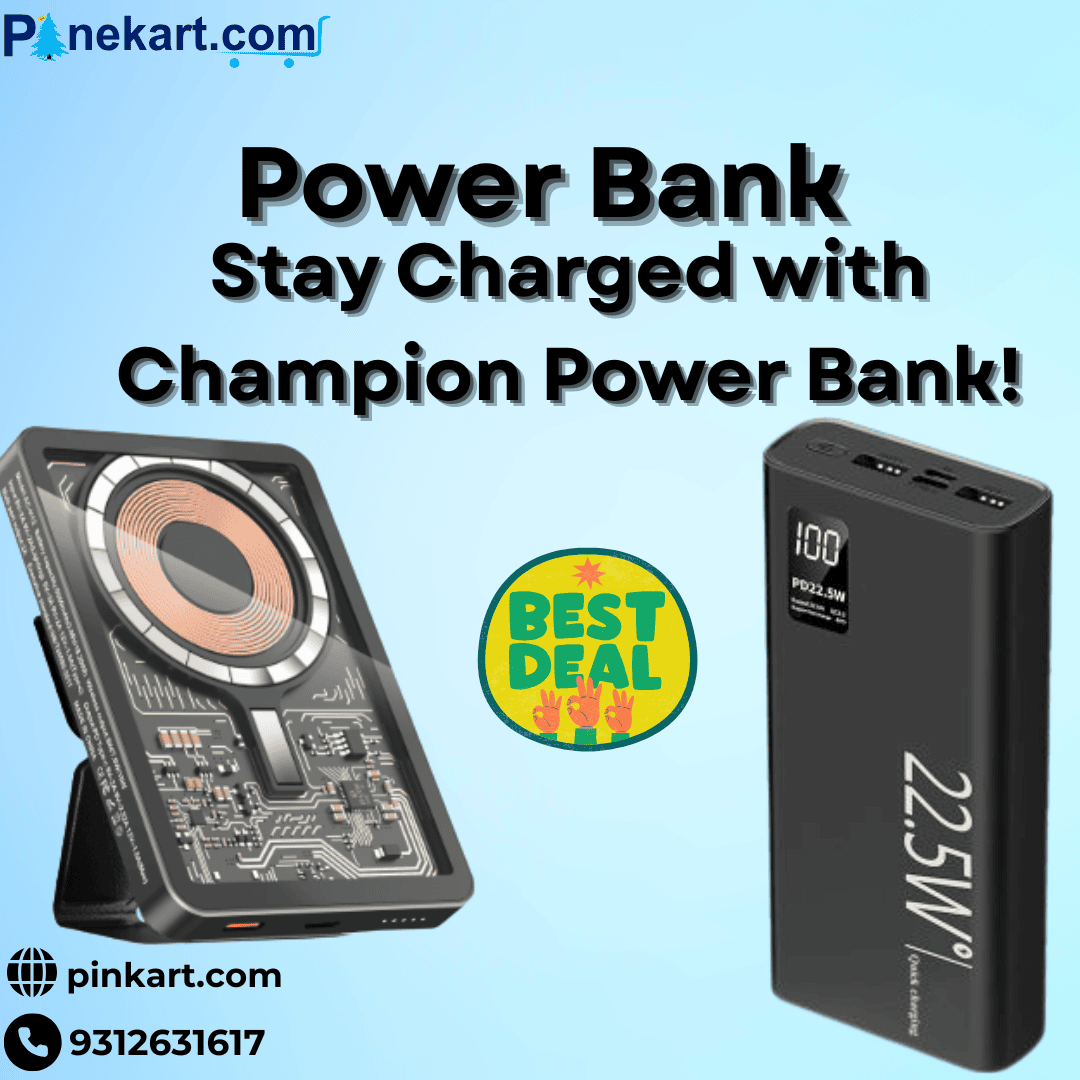In our hyper-connected world, where smartphones, tablets, smartwatches, wireless earbuds, and even laptops are daily essentials, one thing remains constant — the need for power on the go.
Whether you’re a frequent traveler, a student, a professional, or simply someone who hates seeing the dreaded 5% battery warning, a power bank is no longer a luxury — it’s a necessity. In this blog, we’ll dive deep into what power banks are, how they work, how to choose the best one, and what’s new in 2025.
What is a Power Bank?
A power bank is a portable battery that stores electrical energy and allows you to charge your devices without needing a wall socket. Essentially, it acts as a mobile power source, capable of recharging smartphones, tablets, laptops, and other USB-powered devices.
How Does a Power Bank Work?
t its core, a power bank consists of:
Battery cells – Usually lithium-ion or lithium-polymer.
Output port(s) – To charge external devices.
Controller circuit – Manages charging, discharging, voltage regulation, and safety.
The stored energy is delivered to your devices via USB-A, USB-C, or even wireless charging pads, depending on the model.
Types of Power Banks
- Standard Power Banks
- Basic models with USB-A/USB-C outputs; good for phones and small gadgets.
- Fast Charging Power Banks
Support Qualcomm Quick Charge or USB Power Delivery (PD); recharge your devices in half the time. - Laptop Power Banks
High-capacity, often 20,000mAh or more; designed to power USB-C laptops like MacBook or Dell XPS. - Wireless Power Banks
Equipped with Qi wireless charging; just place your phone on top.
How to Choose the Right Power Bank in 2025
With hundreds of options on the market, consider these factors before buying:
1. Capacity (mAh)
5,000–10,000mAh: For short trips or emergency backup.
20,000mAh+: For power users, laptops, or extended travel.
2. Port Type and Count
Look for USB-C with PD (Power Delivery) for fast input/output.
Multiple ports allow simultaneous charging.
3. Charging Speed
Check Wattage: 18W, 30W, 65W — higher is faster (especially for laptops).
Verify support for standards like Quick Charge 4.0/5.0 or USB PD 3.0.
4. Build and Portability
Choose compact and lightweight models for easy carry.
Rugged, waterproof power banks are great for hiking or camping.
5. Brand and Safety
Opt for reputable brands like Anker, Xiaomi, Aukey, Baseus, Belkin, or RavPower.
Must include safety features: overcharge, overheat, short circuit protection.
FAQs About Power Banks
1. What makes a power bank compatible with fast charging?
A power bank supports fast charging if it uses protocols like USB Power Delivery (PD), Quick Charge (QC), or SuperVOOC. You’ll also need a device and cable that support the same standard to get the full benefit.
2. Is it safe to leave a power bank charging overnight?
Most modern power banks have built-in safety features like auto cut-off and overcharge protection, making overnight charging generally safe. However, it’s still best to unplug once it’s fully charged to maximize battery lifespan.
3. Can power banks charge more than one device at a time?
Yes. Multi-port power banks, especially those with both USB-A and USB-C, can charge two or more devices simultaneously. Keep in mind that charging speed may drop slightly when using multiple outputs.
4. Do higher mAh ratings always mean better power banks?
Not necessarily. While a higher mAh means more capacity, factors like output wattage, charging speed, portability, and safety features are equally important. Bigger isn’t always better for everyday use.
5. Why does a 20,000mAh power bank not fully charge my 4,000mAh phone five times?
This is due to energy conversion loss and battery efficiency. On average, only about 70–80% of a power bank’s capacity is usable, depending on quality and power loss during charging.
6. Is a USB-C power bank better than a regular USB-A one?
Yes, generally. USB-C supports faster charging, higher power output, and two-way charging (input/output). If your device supports USB-C, it's best to choose a power bank with this port.
7. Do power banks require any maintenance?
Yes. Charge them at least once every 2–3 months if unused, avoid exposure to extreme heat, and don’t let the battery drain to 0% regularly to extend their life.
8. Are there power banks that can start a car?
Yes, certain high-power jump starter power banks are designed to jump-start cars and also charge devices. They’re bulkier but perfect for emergency kits.
9. Can I use a power bank to charge my laptop?
Only if the power bank supports high-wattage output (typically 30W to 100W) and has USB-C PD. Always check your laptop's power requirements before attempting this.
10. How do I know when it’s time to replace my power bank?
If it charges slowly, loses charge quickly, or stops delivering power to devices reliably, it's likely nearing the end of its life. Most power banks last 2–3 years or 300–500 charge cycles.


